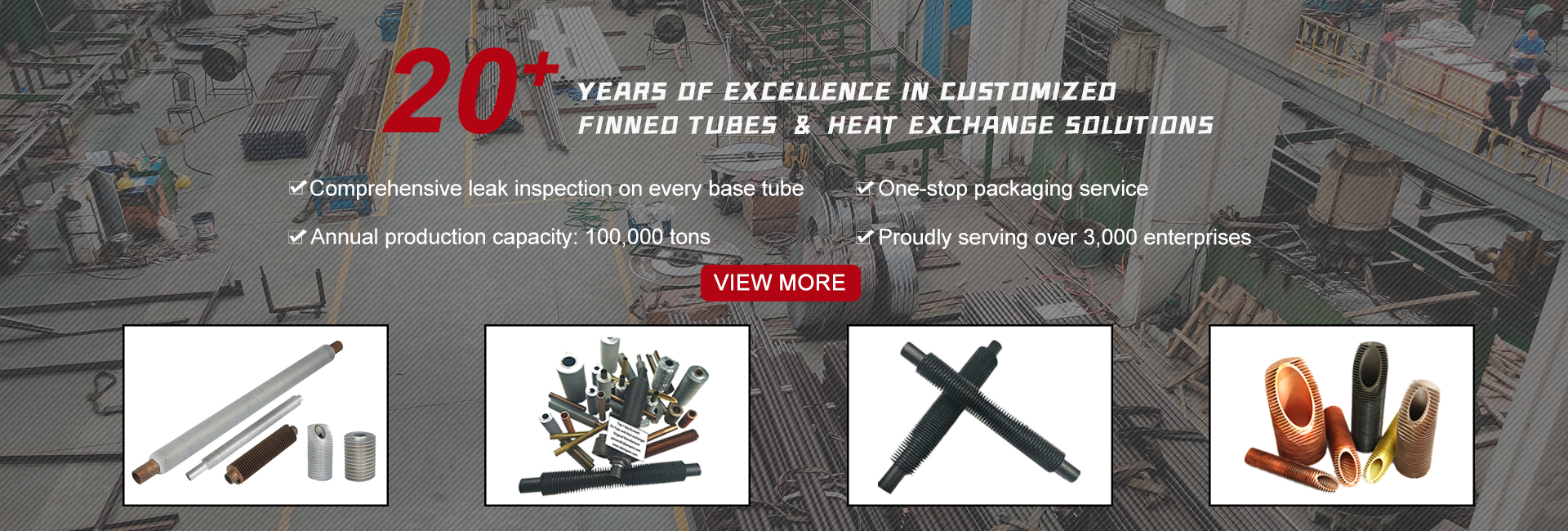
Table des matières
- Introduction
- Qu'est-ce qu'un G Tube à ailettes?
- Manufacturing Process
- Caractéristiques principales
- Technical Specifications
- Avantages
- Applications industrielles
- Foire aux questions (FAQ)
- Conclusion
- Meta Description & Focus Keyphrase
Introduction
G fin tube, a specialized heat transfer element, is extensively used in industrial échangeurs de chaleur, condensers, and air coolers. The tube is manufactured with fins embedded in the grooves of the base tube, creating a strong mechanical bond that enhances thermal performance, corrosion resistance, and durability. In particular, G fin tubes find widespread applications in power plants, petrochemical industries, and air-cooled échangeur de chaleur systems due to their exceptional heat transfer efficiency and long-lasting performance.
Qu'est-ce qu'un G Tube à ailettes?
A G fin tube is a heat transfer tube that is characterized by embedding the fin inside a pre-cut groove in the outer surface of the base tube. The fin is then inserted into the groove, and the groove is closed tightly to lock the fin onto the base tube. This process creates a strong metal-to-metal contact, ensuring maximum thermal conductivity and preventing the fin from loosening due to high temperatures or vibrations.
The fin material is commonly made of aluminum or copper due to their high thermal conductivity, while the base tube can be made of various materials such as carbon steel, stainless steel, copper, copper-nickel, and titanium, depending on the specific application requirements.
Manufacturing Process
- A continuous spiral groove is milled on the outer surface of the base tube.
- Fin strip (usually aluminum or copper) is inserted into the groove.
- The groove is mechanically closed and locked, creating a strong mechanical bond.
- The finished G fin tube is inspected for dimensional accuracy and adhesion strength.
- Compared to L-type or KL-type fin tubes, G fin tubes have higher mechanical strength and better heat transfer performance.
Technical Specifications
Parameter | Spécifications |
Tube Outer Diameter | 19 mm – 63 mm |
Hauteur des ailerons | 6 mm – 16 mm |
Épaisseur de l'ailette | 0.3 mm – 1.2 mm |
Pitch de l'aileron | 8 – 11 FPI (fins per inch) |
Matériau de l'aileron | Aluminum, Copper |
Matériau du tube de base | Carbon Steel, Stainless Steel, Copper-Nickel |
Max Operating Temperature | Up to 400 °C |
Caractéristiques principales
- Fin and tube are made of high thermal conductivity material
- Fin-to-tube contact pressure is high for excellent heat transfer performance
- Fin structure is stable, and there is no deformation of fins due to thermal expansion or vibration
- Suitable for high temperature and high pressure
- Long service life and less maintenance
- Corrosion-resistant with aluminum fin or copper fin
- Suitable for air-cooled échangeur de chaleur and water-cooled échangeur de chaleur
Avantages
- Superior thermal performance with high fin contact pressure and heat transfer efficiency
- Strong mechanical bond with no fin loosening under vibration or temperature fluctuation
- Corrosion-resistant, making it ideal for use in harsh environments, such as in coastal or chemical plants
- Cost-effective with low maintenance cost and long service life
- Customizable design with options for different fin height, fin pitch, fin material, tube material, and manufacturing processes to suit different industries and applications
Applications industrielles
- Power Generation: Economizers, air coolers, condensers
- Petrochemical Industry: Process heaters, coolers, and reboilers
- Oil & Gas Industry: Gas coolers, offshore platforms, and refineries
- HVAC Systems: Air conditioning and heating units
- Marine Applications: Heat recovery, and corrosion-resistant cooling systems
Foire aux questions (FAQ)
Q1: What is the difference between G fin tubes and L fin tubes?
A1: The main difference is that the fins of G fin tubes are embedded into the grooves, which provides a stronger mechanical bond and better heat transfer compared to L fin tubes.
Q2: What is the maximum operating temperature of G fin tubes?
A2: G fin tubes can be used at temperatures up to 400 °C, depending on the materials used for the fin and the tube.
Q3: Are G fin tubes suitable for use in corrosive environments?
A3: Yes, G fin tubes are suitable for use in corrosive environments, especially when aluminum or copper fins are combined with stainless steel tubes.
Q4: Can the fin height and pitch be customized for G fin tubes?
A4: Yes, we can provide fully customized G fin tubes with different fin heights, fin pitches, and other specifications to meet your specific application needs.
Conclusion
Les G fin tube is a high-performance and versatile solution for various demanding heat exchange applications. It offers excellent thermal performance, high mechanical strength, corrosion resistance, and long service life, making it suitable for use in industries such as power generation, petrochemical, HVAC, and marine engineering.
Whether you require standard or custom sizes, the G fin tube can provide stable and reliable performance, with exceptional cost-effectiveness in the long run.
